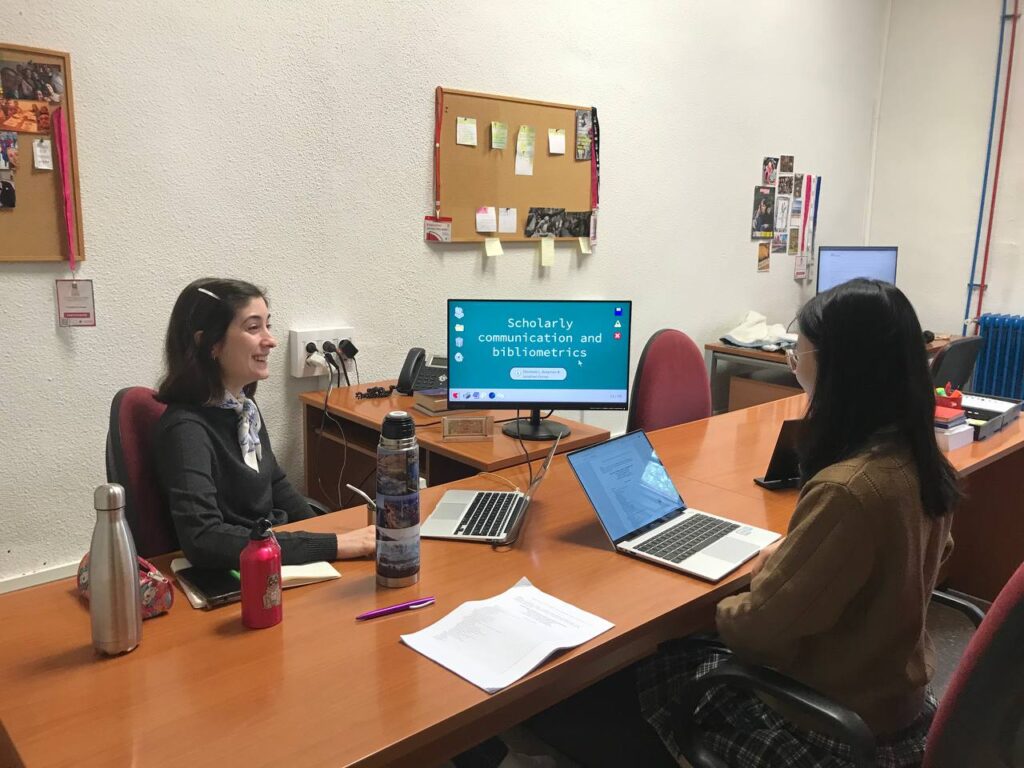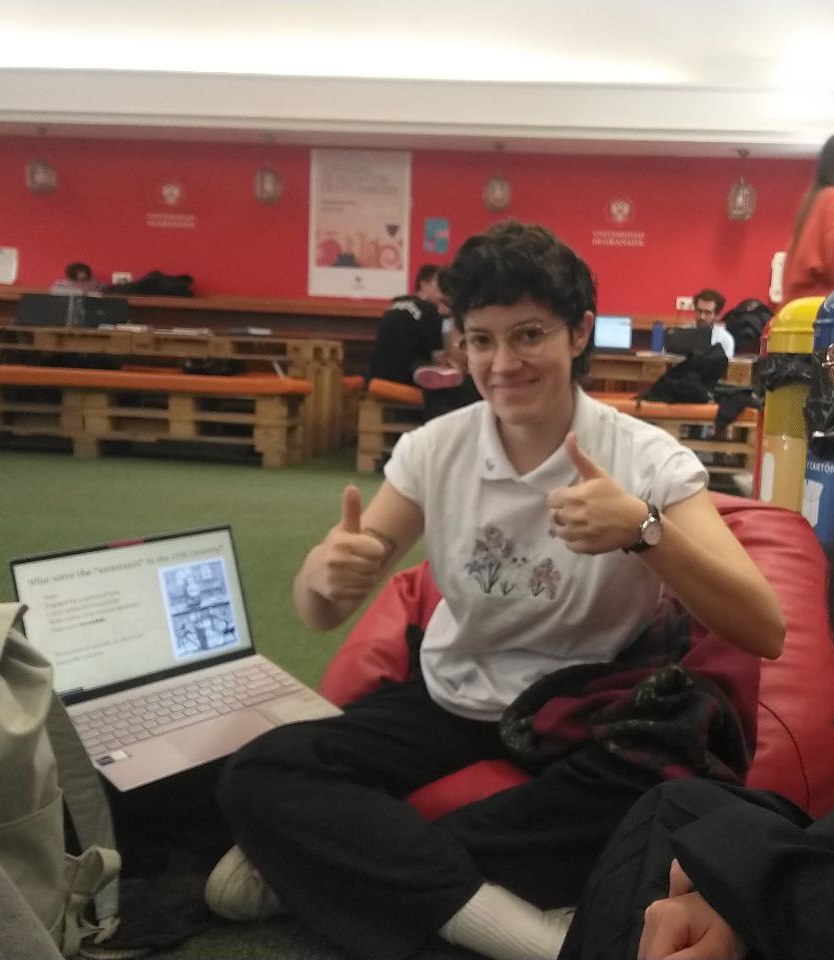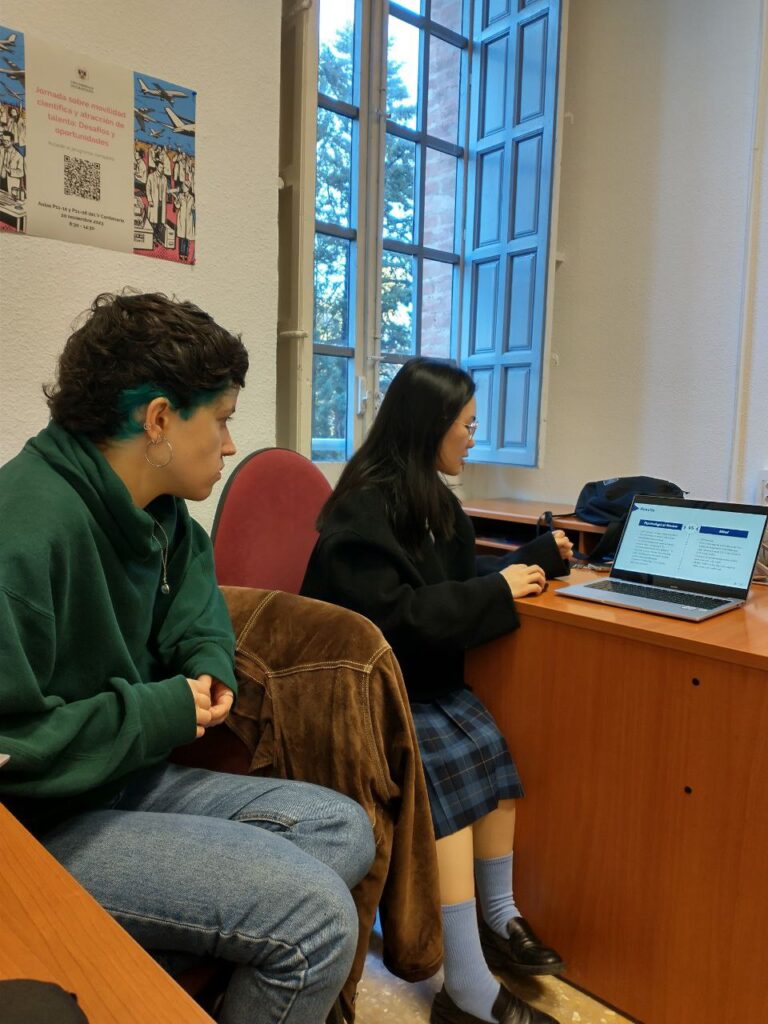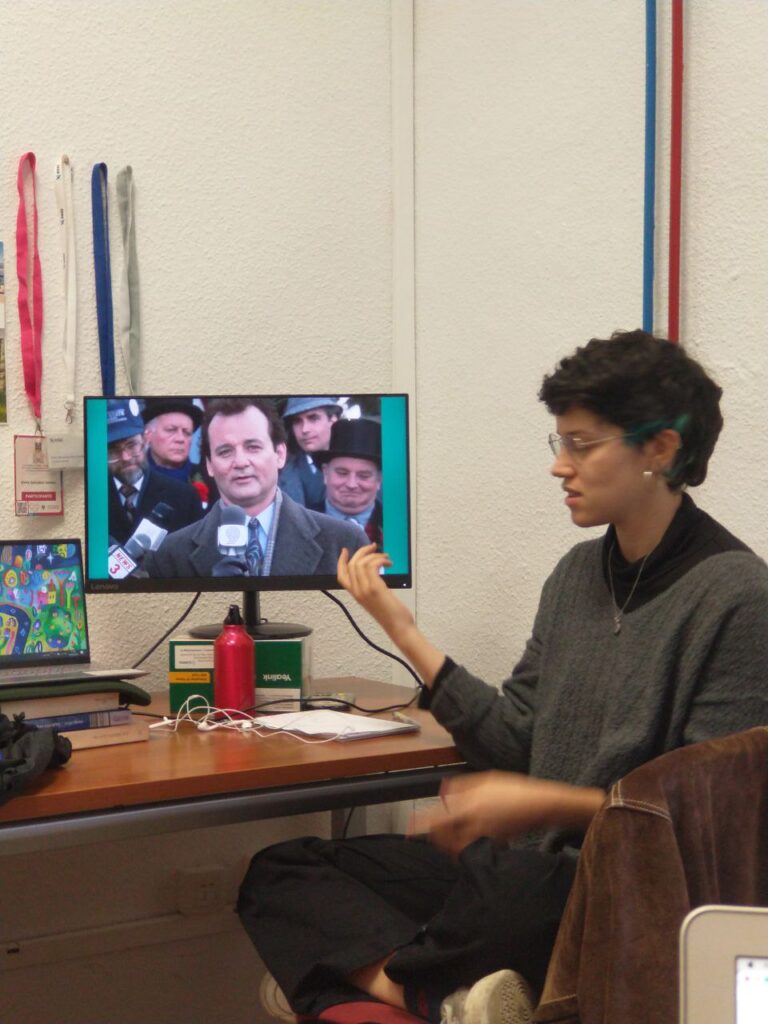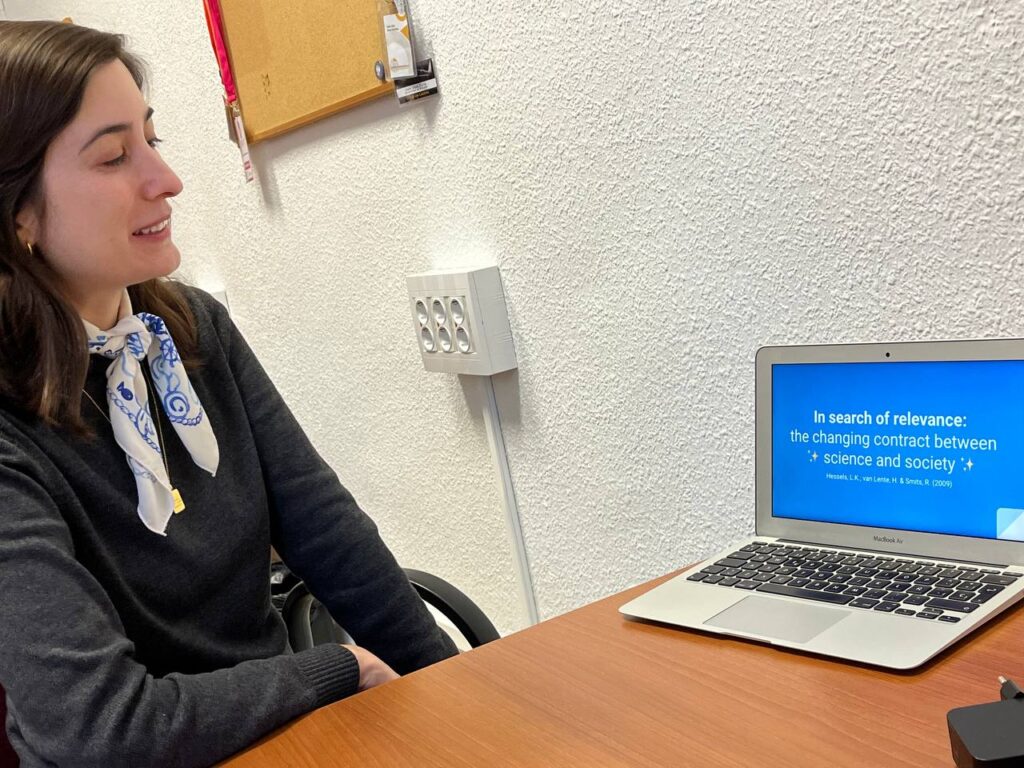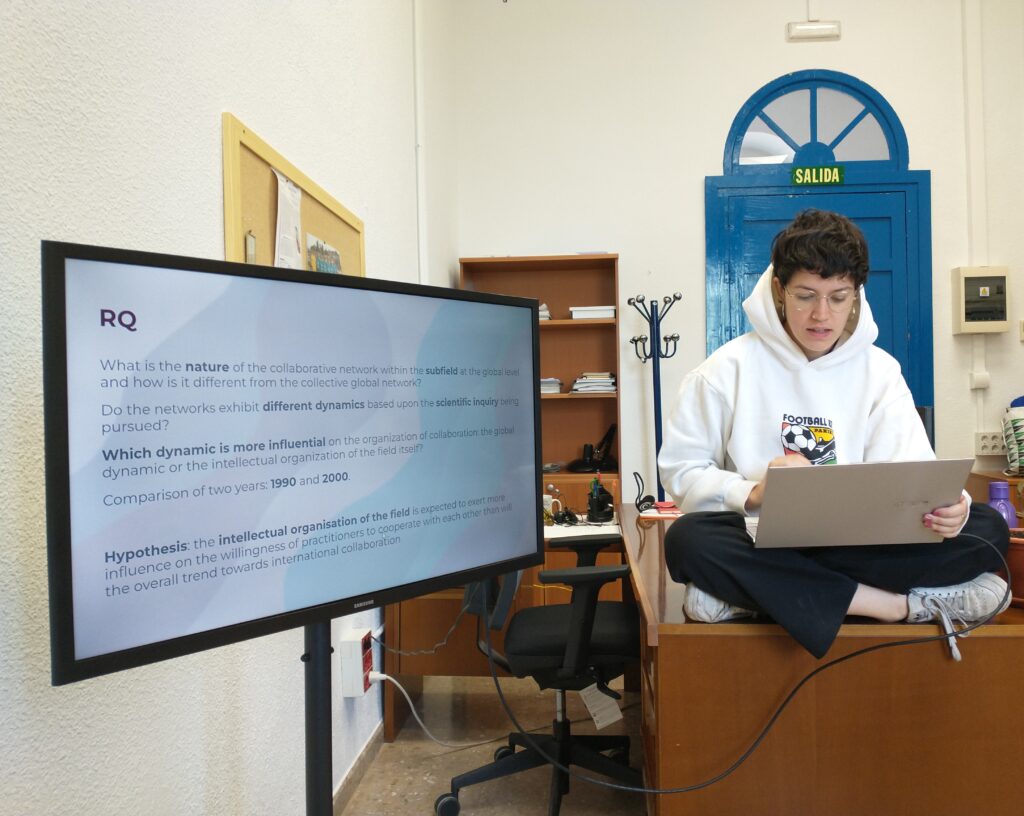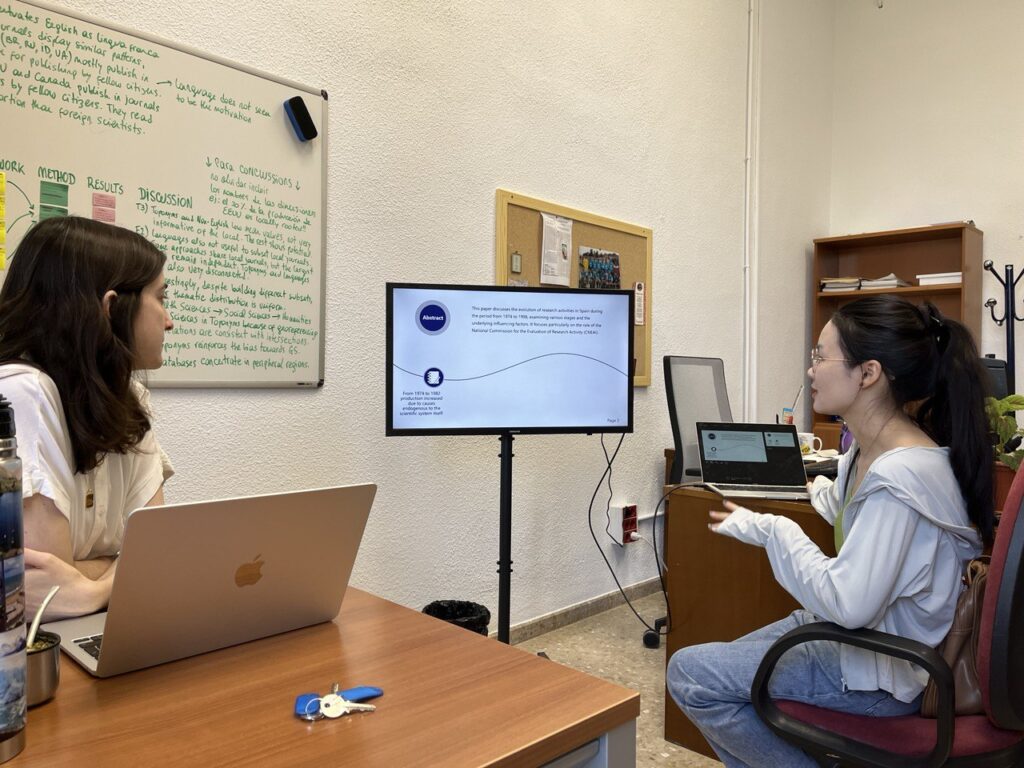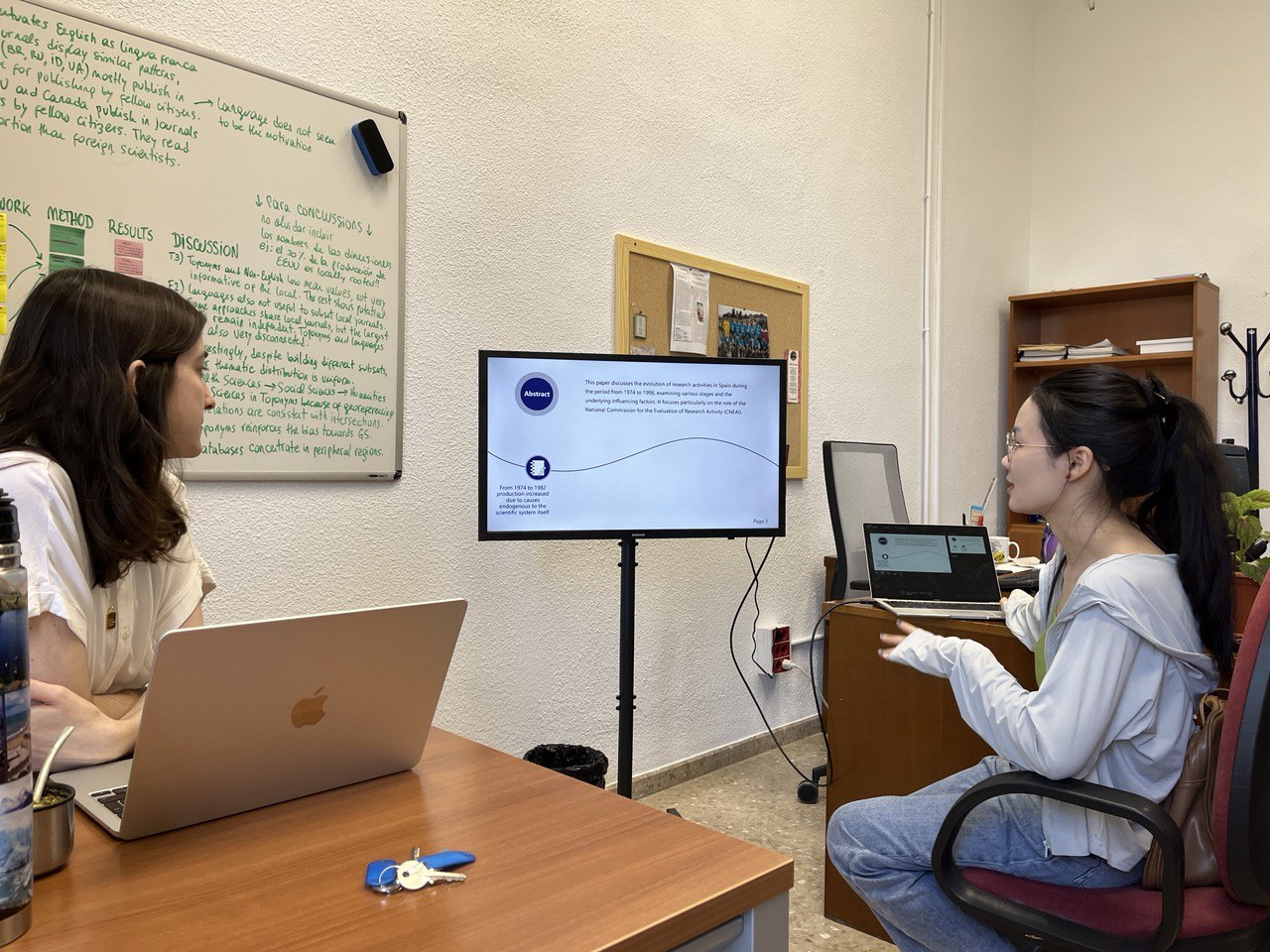Hello! As the end of the academic year approaches, we are saying goodbye to the reading club. But don’t worry, we’ll be back in September! There’s still so much to read, we are not ready to end this yet (this sentence feels timeless).
During this last reading club we kept it local and we read The evolution of research activity in Spain: The impact of the National Commission for the Evaluation of Research Activity (CNEAI) by Evaristo Jiménez-Contreras, Felix de Moya Anegón and Emilio Delgado López-Cózar. Since it was written in 2003, it felt like a history lesson for us. We learned a lot about Spanish post-francoist scientific history and about how to make a robust quanti-quali article.
Since this was the last reading of the reading club, we feel it’s time to do a little recap. We’ve read the following foundational bibliometric texts:
- Scholarly Communication and Bibliometrics
- The Invisible Technician
- A cast of thousands: Coauthorship and subauthorship collaboration in the 20th century as manifested in the scholarly journal literature of psychology and philosophy
- Measuring the growth of science: A review of indicators of scientific growth
- Authorship Norms and Project Structures in Science
- Pathogenic Organization in Science: Division of Labor and Retractions
- In search of relevance: The changing contract between science and society
- Six case studies of international collaboration in science
- The evolution of research activity in Spain: The impact of the National Commission for the Evaluation of Research Activity (CNEAI)
I think the common thread of the selection was twofold. Firstly, these articles range from 1978 (Measuring the growth of science) to 2019 (Pathogenic Organization in Science), with the average year of publication being 2002. We have been able to see the evolution of the discipline both in terms of techniques (it is amazing to observe how computers have basically changed the game) and theories (nowadays, some ideas and critiques are almost the same as those written almost half a century ago). Secondly, maybe we got obsessed with the idea and just saw it everywhere, but almost every reading club we’ve had, ended up discussing «what is an author». When does someone become an author of a publication? When are they helping enough in its creation to deserve a place on the author list? When is it fair? These and similar questions have been constantly in our mind and the funniest thing is that we are not closer than we were in September to answer them. I guess that’s the magic of science.
Anyways, that was it. For following editions of the club we may need to increase geographical diversity of the researchers we read, and the gender equilibria could be better as well. Maybe it’ll be interesting to read research on parts of the world we don’t know much about. Let’s see, we have the summer to reflect on what we want next year’s reading club to look like. I’ll finish this note by saying I’m very grateful to have this space in which we can chill a little bit from our daily academic life and where we can discuss things without being judged. Community reading is great 🙂
